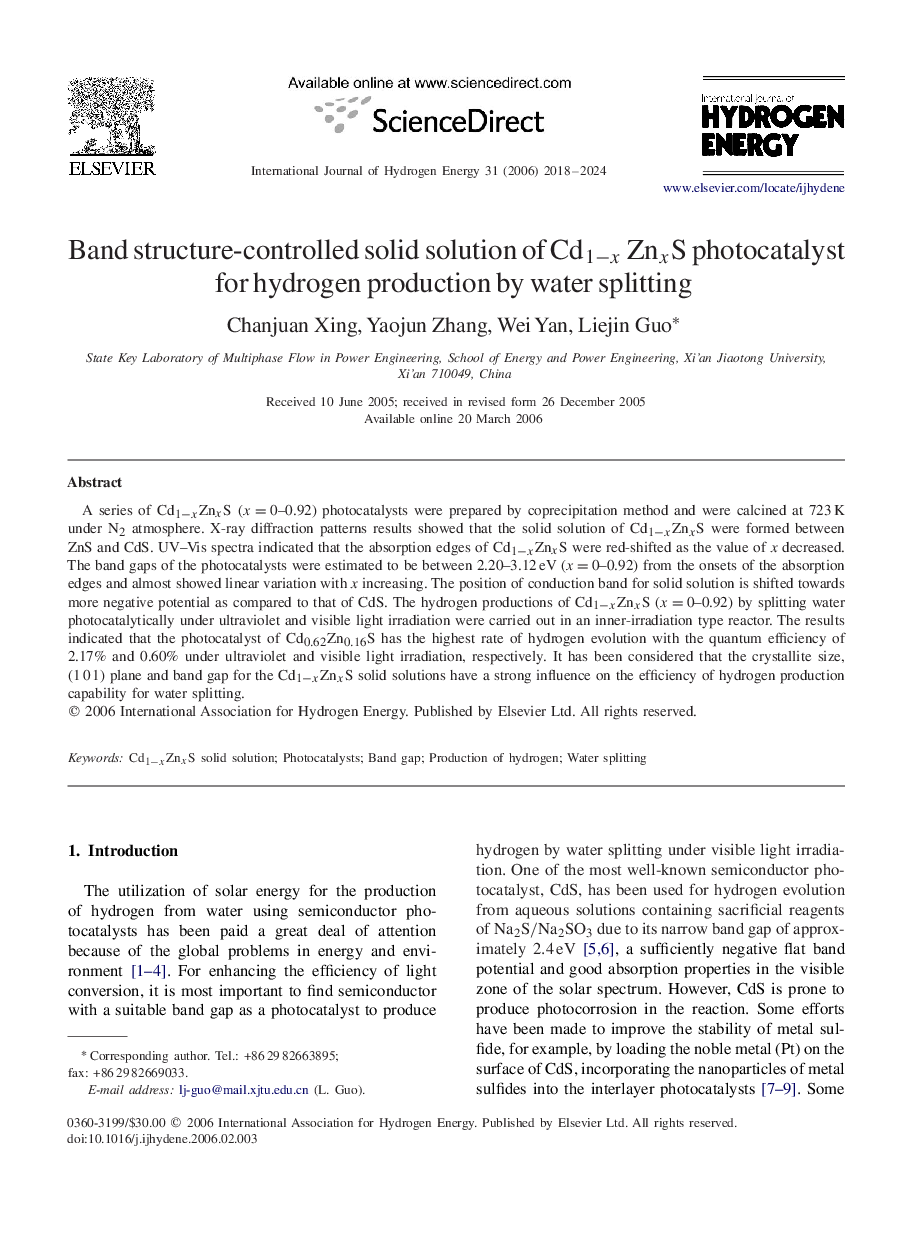| Article ID | Journal | Published Year | Pages | File Type |
|---|---|---|---|---|
| 1280941 | International Journal of Hydrogen Energy | 2006 | 7 Pages |
A series of Cd1-xZnxSCd1-xZnxS (x=0x=0–0.92) photocatalysts were prepared by coprecipitation method and were calcined at 723 K under N2N2 atmosphere. X-ray diffraction patterns results showed that the solid solution of Cd1-xZnxSCd1-xZnxS were formed between ZnS and CdS. UV–Vis spectra indicated that the absorption edges of Cd1-xZnxSCd1-xZnxS were red-shifted as the value of x decreased. The band gaps of the photocatalysts were estimated to be between 2.20–3.12 eV (x=0x=0–0.92) from the onsets of the absorption edges and almost showed linear variation with x increasing. The position of conduction band for solid solution is shifted towards more negative potential as compared to that of CdS. The hydrogen productions of Cd1-xZnxSCd1-xZnxS (x=0x=0–0.92) by splitting water photocatalytically under ultraviolet and visible light irradiation were carried out in an inner-irradiation type reactor. The results indicated that the photocatalyst of Cd0.62Zn0.16SCd0.62Zn0.16S has the highest rate of hydrogen evolution with the quantum efficiency of 2.17% and 0.60% under ultraviolet and visible light irradiation, respectively. It has been considered that the crystallite size, (1 0 1) plane and band gap for the Cd1-xZnxSCd1-xZnxS solid solutions have a strong influence on the efficiency of hydrogen production capability for water splitting.
